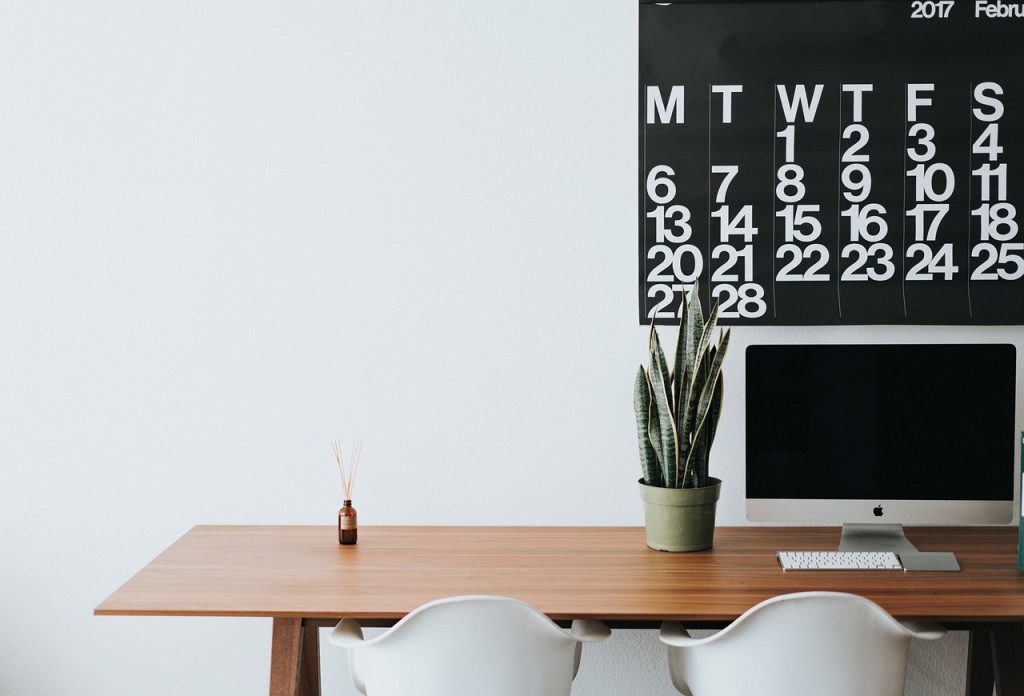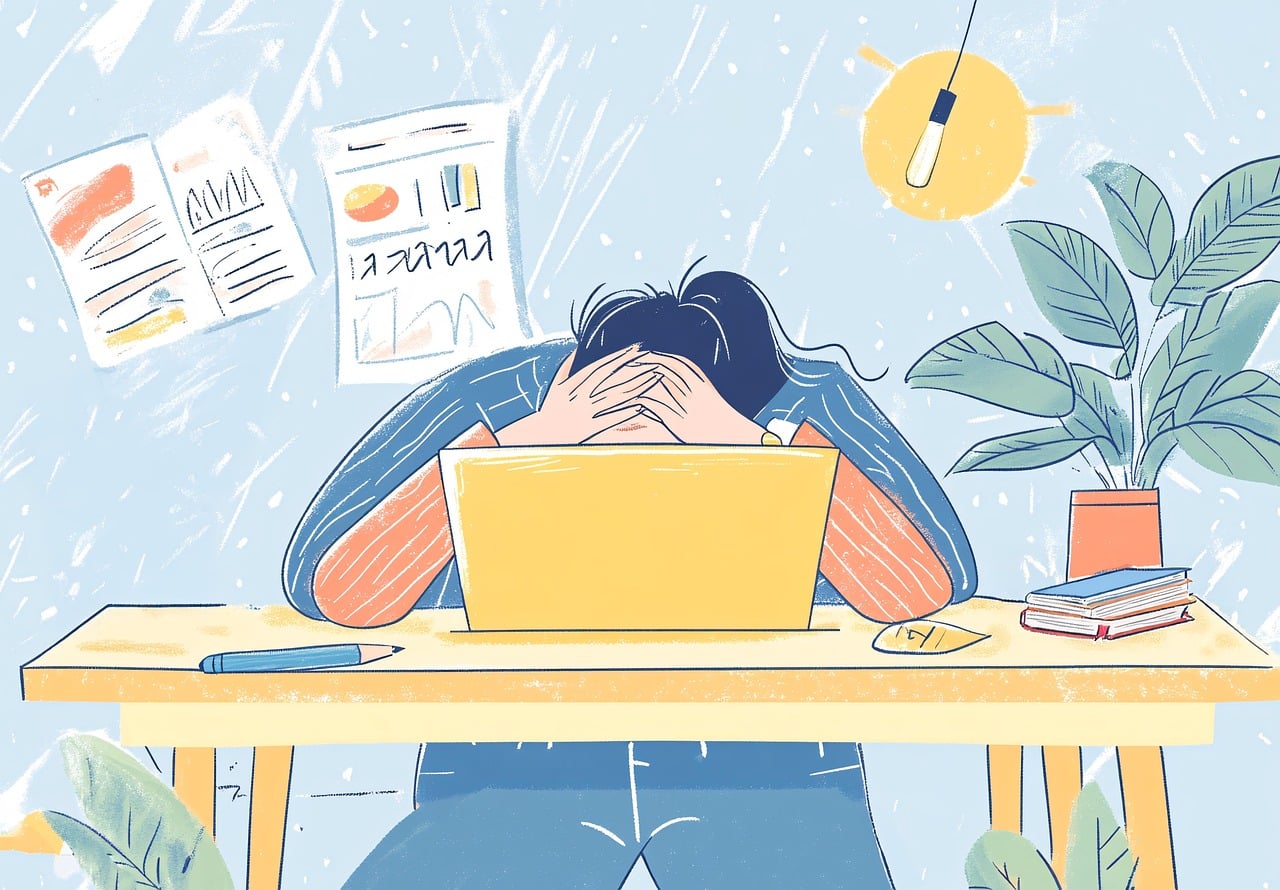Are you struggling to stay productive at your cluttered desk? Studies show that a minimalist desk—one that’s clean, organized, and free from distractions—can boost creativity and enhance focus. In this article, we explore how adopting minimalist desk creativity can help you maximize creativity and productivity.

The Psychological Benefits of a Minimalist Desk
The Power of a Clutter-Free Workspace
When it comes to creativity, less is often more. Cognitive psychology research shows that the brain struggles to filter out unnecessary stimuli, especially in a cluttered environment. A cluttered desk presents a constant visual distraction, which can drain your mental energy and make it harder to focus on the task at hand. By reducing clutter, you allow your mind to clear out distractions, which enables better problem-solving and creative thinking.
One study from Tennant et al. (2015) found that cluttered spaces could significantly reduce cognitive functioning. The study demonstrated that people in messy environments were more distracted, leading to lower levels of productivity. Simply put, a clean desk allows your brain to focus on what really matters: your ideas and minimalist desk creativity.
Cognitive Load Theory: Why Clutter Hurts Creativity
Clutter can overwhelm your brain’s working memory. According to Cognitive Load Theory, our brains can only handle a certain amount of information at once. The more clutter there is, the more information your brain needs to process, leading to mental fatigue. When you have a minimalist desk, your mind isn’t bogged down by extraneous items, and you have more mental space available to think creatively. When your environment is simple and clean, your brain is freed to concentrate on generating new ideas.
How Minimalism Transforms Your Workspace
1. Increases Productivity
In a minimalist setup, everything is in its place. A clean desk means fewer distractions, and less time spent looking for things. Studies show that people who work in organized spaces tend to complete tasks more efficiently and with higher quality. This efficiency boosts productivity and frees up more time for creative brainstorming and ideation.
A minimalist desk fosters an environment where work feels less overwhelming, allowing you to focus on the task at hand. By organizing your workspace to focus on essentials—such as a computer, notebooks, or a few essential tools—you minimize distractions and create space for the flow of ideas.
2. Reduces Stress and Anxiety
Clutter is not just a visual nuisance—it’s also a source of stress. A cluttered desk can create a feeling of being overwhelmed, making it hard to concentrate. The American Psychological Association has found that clutter is linked to higher levels of stress and anxiety, which in turn can affect both physical and mental health.
By adopting a minimalist desk approach, you can reduce these feelings of overwhelm. A neat, clean workspace helps promote relaxation, allowing you to focus more clearly on the creative work at hand. According to Gustavsson (2016), people who work in minimalist environments report feeling calmer and more able to manage their workload without unnecessary anxiety.
3. Promotes Mental Clarity
When you’re in an organized, clutter-free environment, your brain can function more clearly. Mental clarity is essential for creativity, as it allows you to think critically and generate ideas without interference. With fewer objects on your desk to distract you, your brain isn’t overloaded with irrelevant stimuli.
A minimalist desk encourages clear thinking by limiting the visual noise that often interferes with creative thinking. When everything around you is tidy, it becomes easier to focus on developing new ideas, whether you’re working on a creative project, tackling a difficult problem, or brainstorming solutions.
Why Minimalism Works in the Digital Age
Simplicity in the Age of Distractions
In a world full of digital distractions, it’s easy for our brains to become overstimulated. Between constant notifications, emails, social media, and apps, we are often inundated with information that competes for our attention. A minimalist desk removes one of the main sources of distraction: physical clutter.
By simplifying your physical environment, you create a space that encourages deep work, which is crucial for creativity. Research suggests that those who work in simple, minimal environments are more likely to enter a state of flow, a mental state where creativity thrives. This state of flow allows for complete immersion in the task at hand, making it easier to produce innovative ideas and solutions.
A minimalist desk also helps limit the temptation to multitask. Studies show that multitasking can actually reduce productivity and hinder creativity. When you embrace minimalism, you create a space conducive to focused, single-tasking work that is more conducive to creative thinking.
Key Elements of a Minimalist Desk Setup
1. Declutter Your Workspace
The first step in creating a minimalist desk is to declutter. Begin by removing everything from your desk that isn’t essential for your current tasks. This includes papers, books, old gadgets, or any other items that don’t contribute to your immediate productivity. A clean desk allows you to focus on the present, which is key for maintaining creativity.
For digital clutter, organize your files into folders and delete anything that doesn’t serve you. Try using apps or tools that help you streamline your work, such as project management software or a task manager, which helps keep your digital space organized.
2. Keep Only What’s Necessary
A minimalist desk isn’t about having nothing at all—it’s about having only what you need. Keep essential tools like your computer, notebook, pens, or a coffee cup. Add personal touches, such as a plant or an inspiring book, but avoid over-decorating. Less is more when it comes to creating an environment that enhances focus and creativity.
3. Use Functional Furniture
Choosing the right desk and storage options is essential in maintaining a minimalist workspace. Opt for a desk with built-in storage to keep clutter out of sight. Invest in a comfortable chair that supports good posture and promotes focus. A clean and functional desk layout can improve your work experience and make your environment more pleasant and productive.
4. Lighting Matters
Lighting plays an essential role in how you feel and how you work. Natural light is ideal, but if that’s not an option, opt for adjustable task lighting that helps you see clearly without being harsh on your eyes. Proper lighting can help reduce fatigue and make your workspace feel more inviting, which fosters creativity.
How Minimalism Helps You Tap into Your Creative Potential
1. Encourages Deep Work
The minimalist desk encourages a lifestyle of deep work. With fewer distractions, you can focus more easily on complex tasks that require concentration and creativity. As Cohen & Smith (2014) suggest, a simple, organized workspace helps foster a mindset geared toward producing high-level creative work without unnecessary interruptions.
2. Facilitates Problem Solving
Creativity isn’t just about coming up with new ideas—it’s also about problem-solving. A minimalist desk helps you break down tasks into manageable parts. With everything in its place and no clutter to sort through, you can approach problems with clarity and structure, making it easier to find innovative solutions.
Conclusion: Minimalism as a Pathway to Creativity
The minimalist desk isn’t just a passing trend; it’s a proven method for enhancing productivity, reducing stress, and unlocking creativity. A clutter-free environment creates mental space for fresh ideas, deep work, and focused attention. By embracing minimalism, you set yourself up for success by ensuring that your workspace supports your creative potential.
Whether you’re an artist, writer, entrepreneur, or someone just looking to improve focus, a minimalist desk could be the key to unleashing your creativity. Start by decluttering your workspace, organizing your digital tools, and investing in functional furniture. The benefits of a minimalist workspace are clear—less clutter, more creativity.
Reference
- Tennant, R., T. S. C., & D. M. C. (2015). “The impact of cluttered environments on cognitive function.” Journal of Environmental Psychology. Available at: https://www.journals.elsevier.com (Accessed: 2 July 2025).
- Gustavsson, P. (2016). “Minimalism in workspaces and mental health: A study on its impact.” Psychology Today. Available at: https://www.psychologytoday.com (Accessed: 2 July 2025).
- Cohen, D., & R. S. Smith (2014). “The role of simplicity in creative environments.” Psychological Science. Available at: https://www.psychologicalscience.org (Accessed: 2 July 2025).






